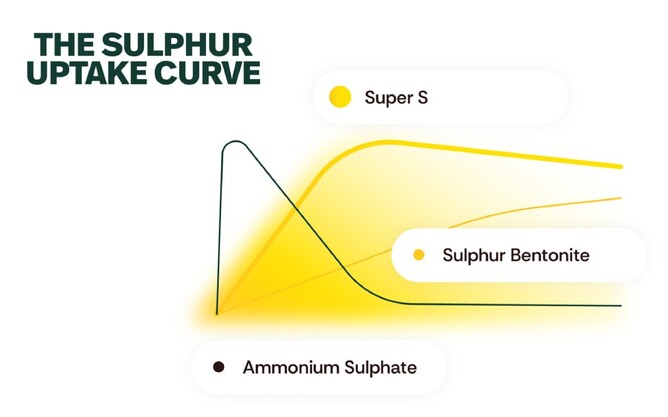Science and research are continually developing new fertilisers that allow us to improve nutrient efficiency and reduce environmental loss without compromising yields.
One of the latest developments is based on the understanding that the smaller the particles of fertiliser are, the faster the nutrients become available to plants.
This is not necessarily a new idea. But the technology to turn this idea into reality has only recently become available.
H Sulphur, a Korean-based company, is now using this technology to create a unique sulphur fertiliser, capable of delivering its nutrients to crops and pasture over an entire growing season at a rate just slightly faster than needed for optimum growth. That’s a big tick for nutrient efficiency.
Sulphur is essential
Sulphur (S) is essential for plant growth. It’s part of several amino acids and the chlorophyll molecule, key to photosynthesis. It’s also a component of the enzyme needed by legumes like clover for nitrogen-fixation, particularly important for our pastoral grazing system in NZ.
Until recently, we’ve not had an issue with soil sulphur levels in NZ. But nowadays, deficiencies are becoming more common due to the increased application of sulphur-free fertilisers.
Sulphur fertilisers in NZ
Two sulphur fertilisers commonly used in NZ are sulphate of ammonia (SOA) and elemental sulphur or sulphur bentonite (ES).
SOA is great when sulphur is needed in a hurry because it’s a sulphate, the form that plants can take up immediately. But it doesn’t stay around for long because it’s soluble and easily leached. This wastes nutrient and money.
ES is a natural BioGro approved source of sulphur. It’s not soluble like SOA, so it needs to be transformed into plant-available sulphates by microbes. This process can take days, weeks, or maybe even months depending on soil conditions. The large particle size of ES (>100 microns) also slows this process down.
In many cases, neither of these sources are ideal.
The solution
H Sulphur has solved these issues by creating a granule or pastille made of micronised elemental sulphur particles of 30 to 40 microns. Because the elemental sulphur particles are smaller, microbes have greater access to the nutrient, so they can break the sulphur down into plant-available sulphate more quickly.
While H Sulphur could have made the particles even smaller, they chose the 30 to 40 micron size because they found that this was the most nutrient efficient. Not only were the nutrients around for longer, but they were also released at a rate just slightly faster than the plants needed for optimum growth.
But the innovation doesn’t stop there.
The design of the pastilles also plays a role in controlling nutrient availability. Each pastille includes a small quantity of urea, which is soluble and helps the pastille begin to degrade, releasing more of the sulphur particles for microbial activity. Additionally, the urea provides energy for the microbes.
The result is a urea-enhanced sulphur fertiliser, now available to us in NZ as ‘Super S’.
Reduced N loss
Further research is showing that nitrogen losses to the environment are reduced when urea-enhanced sulphur fertiliser is combined with urease and nitrification inhibitors. The researchers found that this reduction meant more nutrients remain available in the soil for plant uptake, resulting in greater nutrient efficiency.
Future advancement
While regulations continue to focus on controlling how we farm these days, it’s heartening to see that some sectors of the fertiliser industry are embracing new technology to provide us with management options that enable us to take some of that control back.
Fertiliser coatings, inhibitors, and particle size all provide strategies for nutrient efficiency and sustainability. That’s a much more positive and exciting approach. We can’t wait to see what the next advancement will be.
This article was published in the Coast & Country News.






